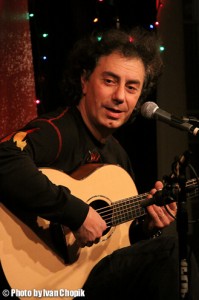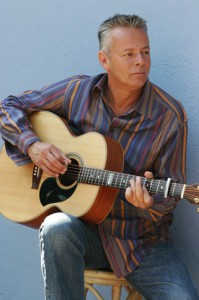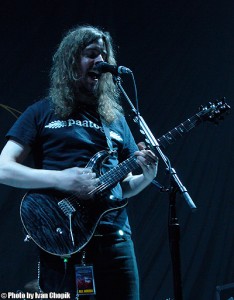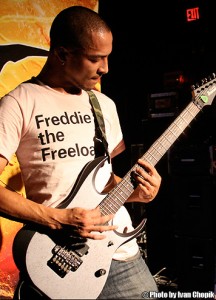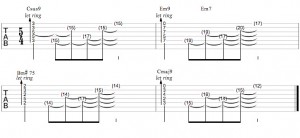[Pierre’s guitar is tuned to D A D G A D, low to high, for all examples in this Masterclass.]
Chords in Alternate Tunings
If you play any tuning, if you want to start playing chords, it’s not like you need a book to look at your fingerings. You just know that a chord is 1-3-5 and you create the chord yourself. In DADGAD, that’s a C [see first chord in diagram]. If you apply the C [shape] of standard tuning you obtain a 7th, [creating a C7].

Muting & Dynamics
There is something which came to me some years ago, which was not obvious yet. I listened to my early recordings and I heard a lot of sonic information, in terms of notes being played and remaining there while other notes are there. Of course, that has to do with the tuning I use, which is DADGAD.
Sometimes it creates ambiguity. It’s like: ‘What is it exactly that you want us to hear? Is it that bass [plays low D string] or is it that bass [plays low A string] or both basses [plays low D then low A]? Do we want here to listen to an interval of a fifth or [plays low D, low A, then middle D]? What is this? Three basses? Why three basses?’ It’s just an example, but to resolve that example it took me a bit of a time to find a way to not do that.
At the beginning I was doing a lot of [plays percussive mute] – trying to create rhythmic things as I was playing, by tapping with the left hand on the neck. But sometimes you have no opportunity to do that; your left hand is busy doing other things.
So there are little tricks, like with the left-hand thumb here. Steel string players have a narrower neck than classical players, so we can use that thumb to [mutes low D string] stop the resonances. But even also that: like you play with the right-hand thumb one bass, you play with your index a second bass, and at the same time that your index plays that second bass, that thumb comes and rests on the first bass – at the very same time. And you hear one bass at a time.
It’s an example that has to be applied to every finger. It’s a relationship between fingers, in fact. It’s a mental thing. You have to accept that fingers are there to play, but they are also there so that you can control the sound – and sometimes they don’t play. They just come and there is a movement of the fingers which does not result in sound, but in silence.
I’d like to play just a little melody for you with no contact of my fingers on the strings and let everything resonate, and then contact. [Example 1] [ Example 2] I prefer the second personally, because it’s an intention – it’s more clear.
When we speak, in our intentions, in our emotions, there are words that we pronounce quietly, others that are louder. The same should happen with the music. This amplitude is the way we tell our story. It is the way we keep the momentum, the drive for the person listening. This is the way we keep people interested, quite simply put.
Example 1

Example 2

Harp Technique
I use a lot of harp effect technique. [Example 3a] [Example 3b] With it I can have strings bouncing against each other with consecutive notes. [Example 4a] I can have them be played together and it creates a dissonance of a second interval. [Example 4b] I can also use a lower note to come to the higher note. [Example 4c]
On my right hand I’m going to try to control the sounds that I feel are more important than others, with this technique of thumb and index, for instance. [Example 5a] And now index and middle. [Example 5b] This is a scale in F. And the rendition of that is very liquid, very fluid, like stairs. But it’s round. [Example 6]
Example 3
Example 4

Example 5

Example 6
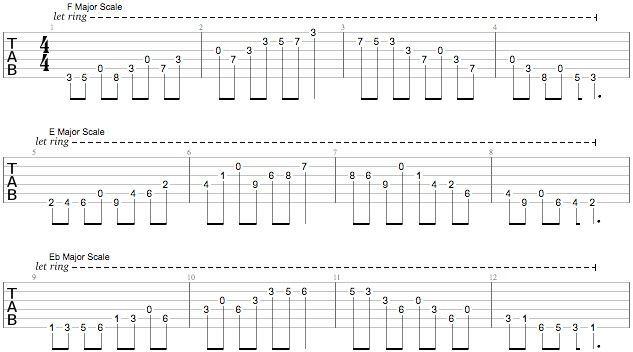
Vibrato Variations
[Example 7] Instead of using vibrato on the left hand I use the whole guitar, shaking and creating this. [If I only use my left hand], that is not [affecting] an open string – what do I do with that open string? I have to move [the guitar].
There are two ways of moving. One is to have all the molecules of sound knock against the sides of the guitar, and go out like grapes of sound out of the sound hole. Another one is to work only with the neck and secure the guitar [against the body] and push on the neck. The pitch goes down like on an electric guitar. It’s doable with a steel string, not with a nylon string unfortunately. [Example 8] Like an old record.
Example 7

Example 8

The Alchemist
[To close the Masterclass, Pierre gives a beautiful performance of his solo acoustic piece ‘L’alchimiste’ [The Alchemist] from his 2001 Favored Nations debut Intuite.]

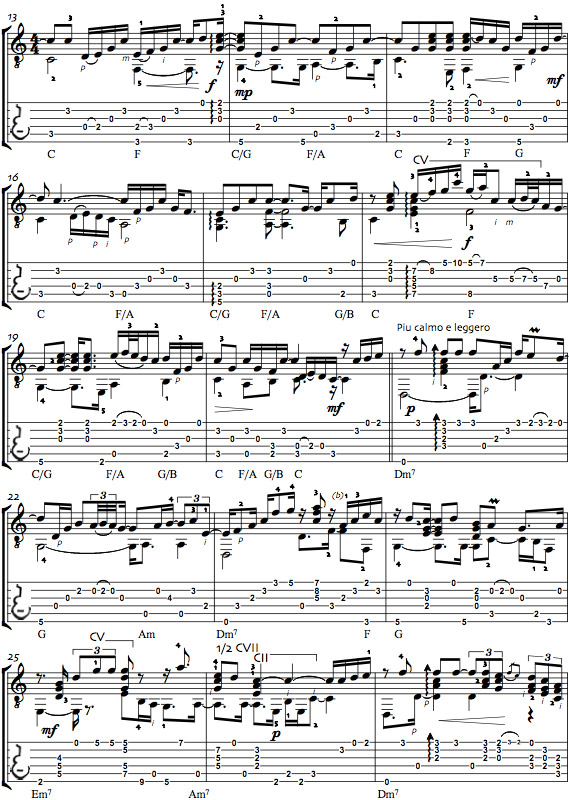

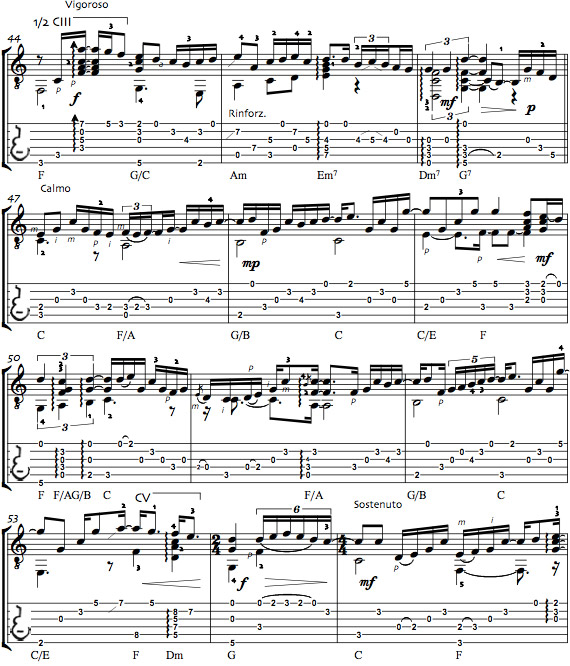

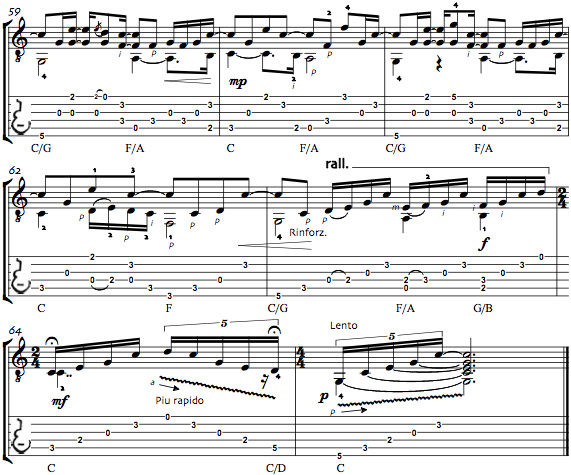
[*Special thanks to Matt Smith and his crew at the wonderful Club Passim and the Passim School of Music for their warm hospitality, and to Luke Dennis for his excellent transcriptions of the Masterclass examples!]




